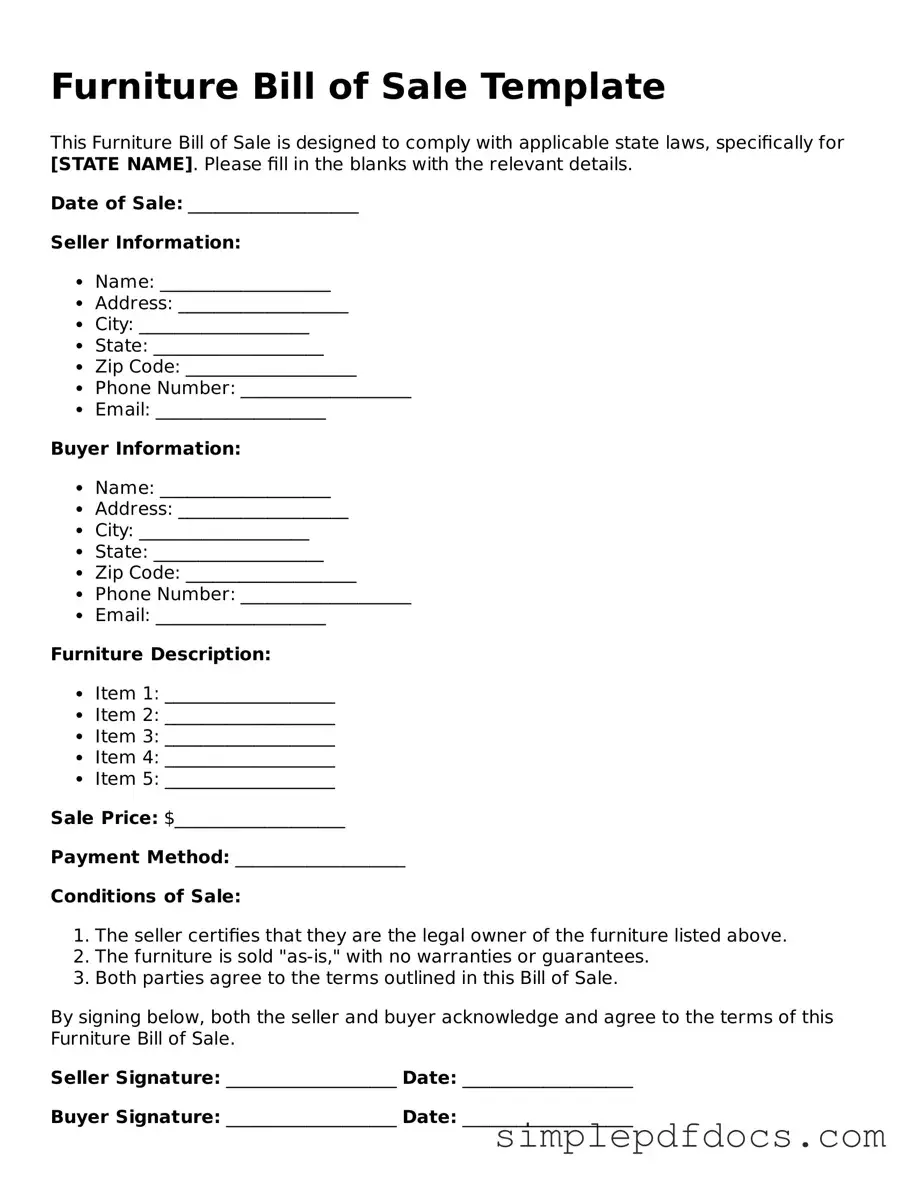The Furniture Bill of Sale form serves as a vital document in the process of buying or selling furniture. This form outlines the details of the transaction, ensuring that both parties have a clear understanding of the terms involved. Key aspects include the identification of the buyer and seller, a detailed description of the furniture being sold, and the purchase price. Additionally, the form may include information about the condition of the items, any warranties provided, and the date of the transaction. By documenting these elements, the Furniture Bill of Sale helps protect the rights of both the buyer and seller, providing a record that can be referenced in case of disputes. Having a properly completed form can facilitate a smoother transaction and serve as proof of ownership transfer. Understanding the importance of this document can help individuals navigate the buying and selling process with confidence.
